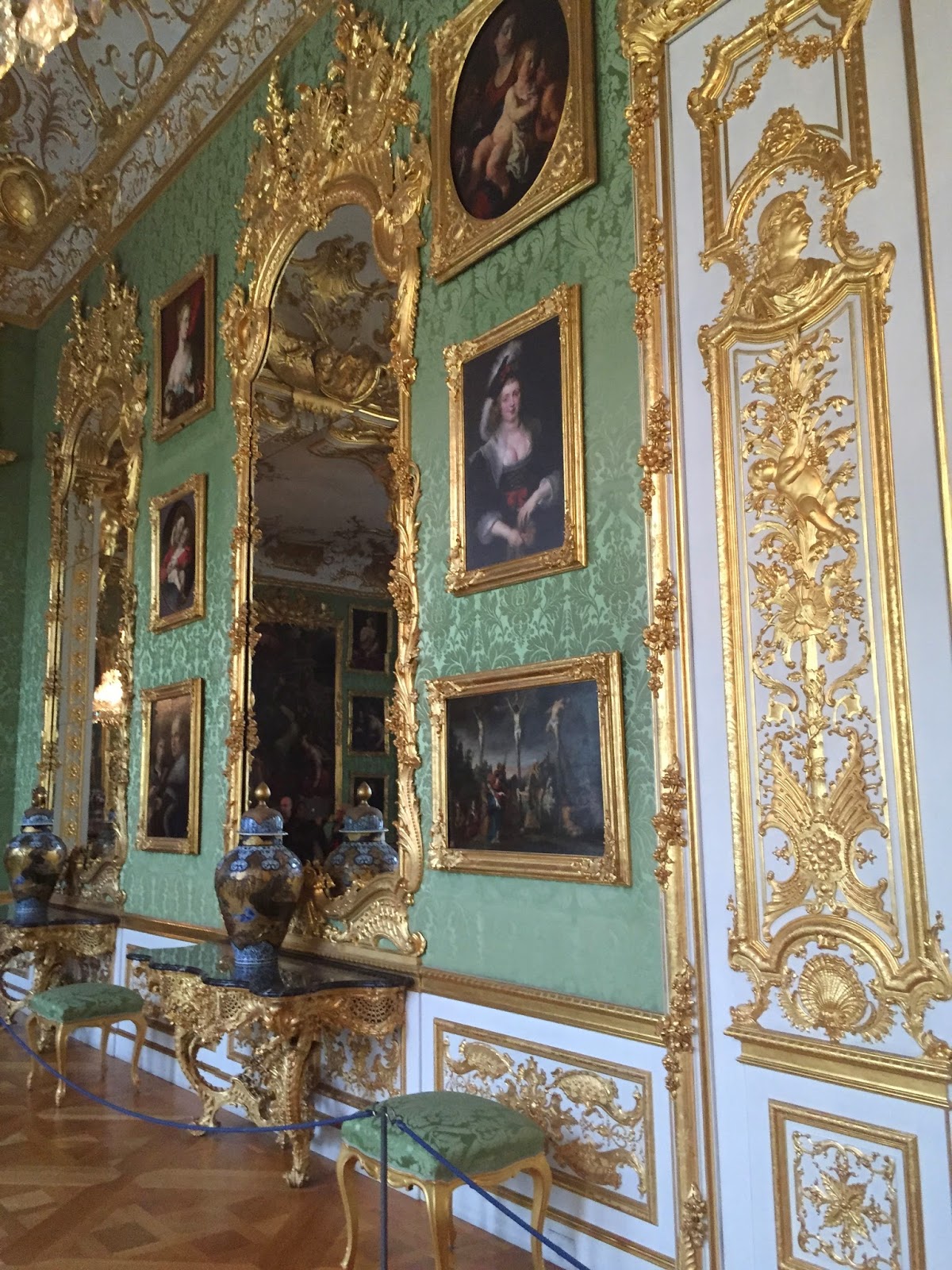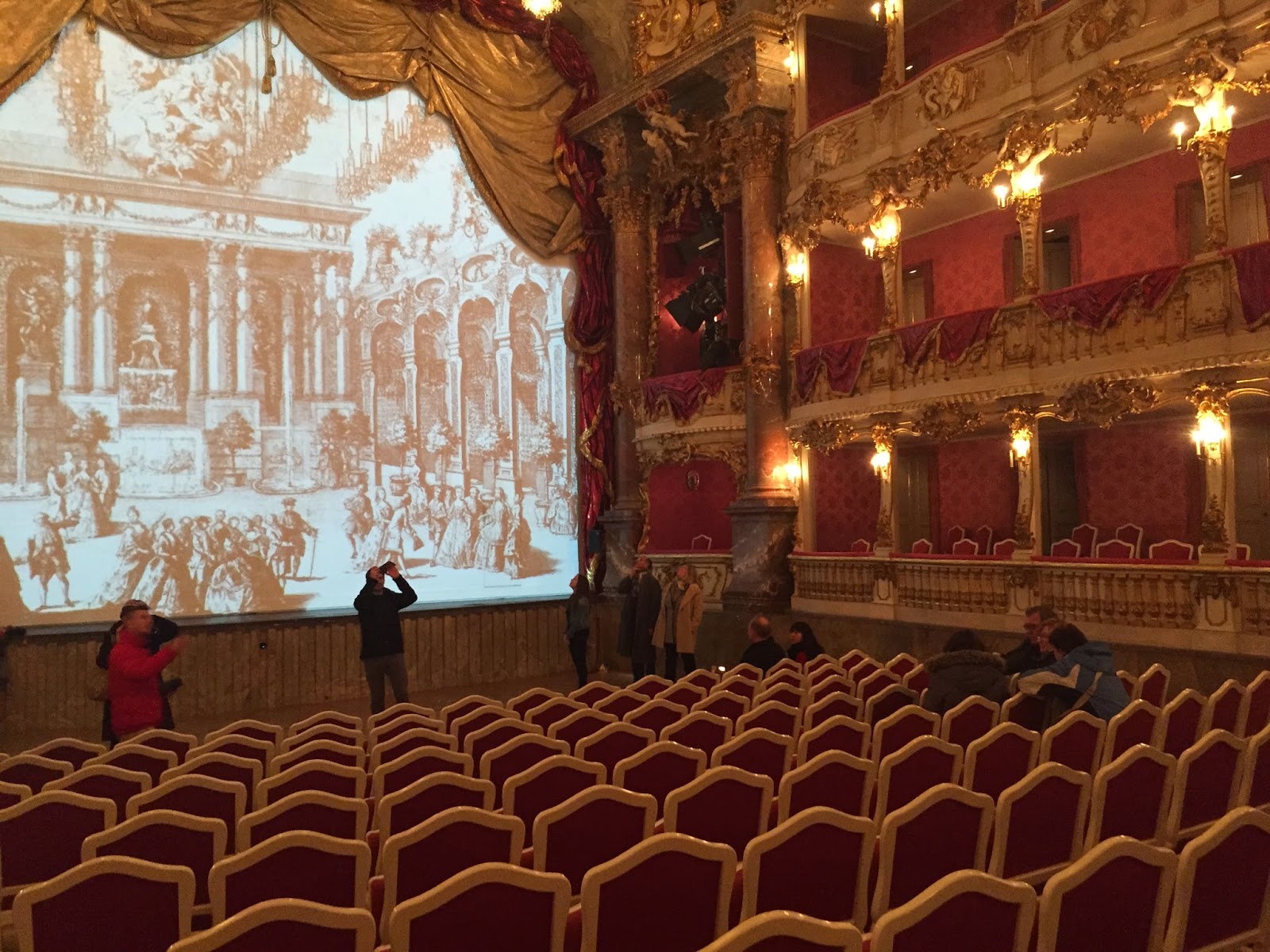
19 April 2015 (Sunday) - Karlsplatz (Stachus), Konigsplatz and Lenbachhaus. Today a colleague kindly invited me on a trip to the Lenbachhaus with her. It was definitely a great opportunity not to be missed and I really appreciate her putting aside time from her studies for examinations and work to spend an afternoon with me at the art house!
But before we set off from office at 12pm, I had to settle my own lunch. The problem is... everywhere closes on Sundays. And I really mean EVERYWHERE! In fact, another colleague once remarked that this custom is so entrenched in Munich that "its almost religious". For a Singaporean whose pastime is shopping, its just "un un un-believable"! So after many failed attempts at various places to buy lunch, I decided that my best chance to grab some lunch was in the McDonalds at Karlsplatz.
Neo-baroque Justizpalast (Palace of Justice)
Here I was at Karlsplatz in front of the most significant building - the Palace of Justice. Karlsplatz was previously known as Stachus, which means a large square in Central Munich. The square was officially named Karlsplatz in 1797 after the unpopular Charles Theodore, Elector of Bavaria. Hence, Munich Natives seldom use that name, calling the square "Stachus" instead.
The Stachus
Karlstor - Gothic gate of a demolished medieval fortification
Between Stachus Square and Marienplatz, the main pedestrian area of the city houses numerous shops and restaurants.
My Big Breakfast (also known as Großes Frühstück) was unfortunately too little bacon and too much eggs. But nevertheless, you eat what you get and the breakfast also comes with an additional pancake with egg mayo and ham which was quite delicious for a starving girl.
I was also initially shocked to see that they had served hot plain water in the cup. However, later I noticed the tea bag that's sitting on top of the tissue paper. The hot tea is definitely a recommended drink on a cold morning.
At 12pm, we headed for the Lenbachhaus. It is situated at Konigsplatz in close proximity with the other art museums that I visited previously (i.e. the Alte Pinakothek and Neue Pinakothek). According to my colleague, the Konigsplatz has one of the most beautiful train stations in Munich with the art pieces decorating the walls and the statues displayed in the station.
Konigsplatz (King's square) is another square in Munich. Built in the style of European Neo-classism in the 19th century, it is a centre of cultural life. The Konigsplatz was modelled after the Acropolis in Athens.
The Propylaea: The gate was built by King Ludwig I
as a sign of friendship between Greece and Bavaria.
as a sign of friendship between Greece and Bavaria.
The Lenbachhaus was built as a Florentine-styled villa for the painter Franz von Lenbach between 1887 and 1891. The museum was closed in 2009 for renovations and was only finally reopened in mid 2013.
The Lenbachhaus
The Lobby
There were many 3D art sculptures and various international contemporary art, quite different from the art works which I saw at the Alte and Neue Pinakothek.
Evolution
The Cat
The Two Towers
Untitled
Hollywood
Another artwork of parrots from the artist above.
Notice how the art is done on a mattress canvas?
Notice how the art is done on a mattress canvas?
In the midst of the Central Munich, you find a beautiful garden like a hidden jewel within the Lenbachhaus. Although it was cold outside, we took time to stroll along the garden, enjoying the peaceful oasis amongst the busy city life.
Finally, the highlight of the day was "The Blue Rider". Lenbachhaus is famous for its large collection of paintings by "The Blue Rider", a group of expressionist artists established in Munich in 1911, which included amongst others, the painters Wassily Kandinsky (the Founder), Gabrielle Munter (Kandinsky's lover), Franz Marc, Auguste Macke and Paul Klee. The last surviving artist of "The Blue Riders", Gabrielle Munter, donated 1,000 "Blue Rider" works to the Lenbachhaus on her 80th birthday before she passed away in 1962.
"The Blue Horse I" - Franz Marc. Blue signified "spiritualism" to the artists.
Franz Marc preferred painting animals as he thought them to be more dignified
than humans. Here we see a painting drawn from the perspective of a horse.
than humans. Here we see a painting drawn from the perspective of a horse.
Auguste Macke's depiction of his wife, Elisabeth and son, Walter
The pictures above were taken from a special exhibition held at the Kunstbau which featured the friendship between Franz Marc and Auguste Macke. How their lives and art ideologies influenced each other. It was a pity that both died young when they were enlisted in the army for World War I.
Unfortunately photos are not allowed, but you can check out Wikipedia links below for a pictorial summary of their artworks, especially those influenced by Robert Delaunay, relating to colour, form, futurism and cubism which were all important elements of expressionism.
Franz Marc: http://en.wikipedia.org/wiki/Franz_Marc
Auguste Macke: http://en.wikipedia.org/wiki/August_Macke
























































